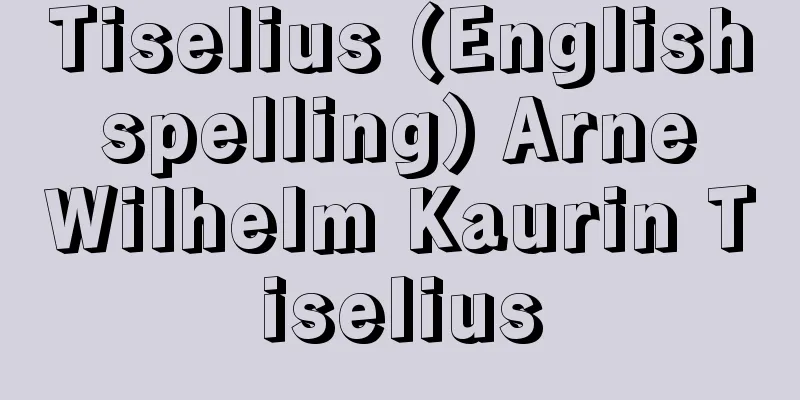Electron diffraction

|
In modern physics, electrons are both particles and waves (particle-wave duality). Their wavelength depends on the speed of the electron, and according to de Broglie's formula, it is 0.1 nanometers at an accelerating voltage of 150 volts and 0.01 nanometers at an accelerating voltage of 15,000 volts. These wavelengths are in the same range as those of X-rays, so when an electron beam is irradiated onto a crystal, it is scattered by the periodically arranged atoms, causing a diffraction phenomenon similar to that of X-rays. This phenomenon is called electron diffraction. This phenomenon was independently discovered in 1928 by the Americans Lester Halbert Germer (1896-1971) and G.P. Thomson of England. They were awarded the Nobel Prize in Physics in 1937 for their experimental proof of the wave nature of electrons. The year after their discovery, Masashi Kikuchi of Japan also succeeded in a similar experiment and famously discovered the unique pattern in electron diffraction that is now widely known as the Kikuchi pattern. Electron diffraction is distinguished by the experimental technique used when the accelerating voltage of the electron beam is relatively low (1,000 volts or less) and high (10,000 volts or more), and is called Low Energy Electron Diffraction (LEED) for the former and High Energy Electron Diffraction (HEED) for the latter. The Davisson-Germer experiment was the former, and the Thomson and Kikuchi experiment was the latter. A schematic diagram of the latter experimental method and an example of a diffraction photograph are shown ( ). This diffraction photograph was taken when electrons of about 200,000 volts were irradiated onto a single crystal thin film of molybdenite. The numerous spots seen in the photograph correspond to the Bragg reflections of X-rays, and the radial bands are Kikuchi bands, a type of Kikuchi figure. Like X-ray diffraction, electron diffraction is used to study the atomic arrangement in crystals; however, electron beams are more easily absorbed than X-rays, and diffraction occurs at very small thicknesses, making it more suitable for studying thin films and surfaces. In particular, the atomic arrangement of even the first layer of a crystal's surface has been clarified in recent years. This type of achievement is extremely important as the basis for technologies such as (thin film) integrated circuits. Electron diffraction is essential as the theoretical foundation for electron microscopes. Japan has a tradition of electron diffraction dating back to Kikuchi, and has also contributed to the development of the electron microscope. [Ryoji Ueda and Akira Tonomura] "Electron Diffraction and Electron Microscopy" by Ryoji Ueda (included in "History of Physics in Japan, Vol. 1," edited by the Physical Society of Japan, 1978, Tokai University Press)" ▽ "Experimental Physics Lectures 21: Electron Diffraction and Electron Spectroscopy," edited by Shizuo Miyake (1991, Kyoritsu Shuppan)" ▽ "Easy Electron Diffraction and Elementary Crystallography: Indexing Electron Diffraction Patterns," by Michiyoshi Tanaka, Masami Terauchi, and Kenji Tsuda (1997, Kyoritsu Shuppan)" ▽ "Surface Electron Diffraction Methods for Nanotechnology," edited by the Japanese Society of Surface Science (2003, Maruzen)" [References] | | |©Shogakukan "> Schematic diagram and diffraction photograph of high energy electron diffraction (Figure) Source: Shogakukan Encyclopedia Nipponica About Encyclopedia Nipponica Information | Legend |
|
近代物理では、電子は粒子であると同時に波動でもある(粒子と波動の二重性)。その波長は電子の速度に依存し、ド・ブローイの公式によると、加速電圧150ボルトで0.1ナノメートル、1万5000ボルトで0.01ナノメートルである。これらの波長はX線の波長と同じ範囲にあるので、電子線を結晶に当てると、周期的に配列した原子で散乱され、X線と同様に回折現象をおこす。これを電子線回折、または電子回折という。この現象は1928年に、アメリカのデビッソンとガーマーLester Halbert Germer(1896―1971)ならびにイギリスのG・P・トムソンによって、おのおの独立に発見された。彼らは電子の波動性を実験的に証明した功績によって、1937年にノーベル物理学賞を授与された。彼らの発見の翌年に、日本の菊池正士(せいし)も同類の実験に成功し、今日、広く菊池図形(キクチパターン)とよばれている電子線回折に特有な図形を発見したことは有名である。 電子線回折は、用いられる電子線の加速電圧が比較的に低い場合(1000ボルト以下)と高い場合(1万ボルト以上)で実験技術に大きな差があるので、前者を低速電子線回折Low Energy Electron Diffraction(LEED)、後者を高速電子線回折High Energy Electron Diffraction(HEED)とよんで区別する。デビッソン‐ガーマーの実験は前者、トムソンと菊池の実験は後者だった。後者の実験法の模式図と回折写真の一例を示した()。この回折写真は約20万ボルトの電子を輝水鉛鉱(モリブデナイト)の単結晶薄膜(はくまく)に当てた場合のもので、この中に見られる多数の斑点はX線のブラッグ反射に相当するもの、放射状の帯は菊池図形の一種の菊池バンドである。 電子線回折は、X線回折と同様に結晶中の原子配列の研究に応用されるが、電子線はX線より吸収されやすく、回折現象もわずかな厚さでおこるため、薄膜や表面の研究に適している。とくに最近は、結晶表面の第一層の原子配列さえ明らかにされている。この種の成果は(薄膜)集積回路などの技術の基礎としてきわめて重要である。電子線回折は電子顕微鏡の理論的基礎として欠くことができない。日本には菊池以来の電子線回折の伝統があり、電子顕微鏡の開発にも貢献した。 [上田良二・外村 彰] 『上田良二著『電子回折と電子顕微鏡』(日本物理学会編『日本の物理学史 上』所収・1978・東海大学出版会)』▽『三宅静雄編『実験物理学講座21 電子回折・電子分光』(1991・共立出版)』▽『田中通義・寺内正己・津田健治著『やさしい電子回折と初等結晶学――電子回折図形の指数付け』(1997・共立出版)』▽『日本表面科学会編『ナノテクノロジーのための表面電子回折法』(2003・丸善)』 [参照項目] | | |©Shogakukan"> 高速電子線回折の模式図と回折写真〔図〕 出典 小学館 日本大百科全書(ニッポニカ)日本大百科全書(ニッポニカ)について 情報 | 凡例 |
Recommend
Treaty of Great Britain and Northern Ireland
Please see the Lhasa Treaty page. Source: Encyclo...
imperial purple
…There are mountains of shells still piled up at ...
Rainaldi, G.
…Italian architect. He led the Roman Baroque afte...
Heian Shrine
Located in Nishitenno-cho, Okazaki, Sakyo Ward, K...
Tankiri bean - Tankiri bean
A perennial creeping plant of the legume family (...
Port Blair (English spelling)
…British colonization of South Andaman Island beg...
Pythoninregius (English) Pythoninregius
… [Takahiro Matsui]. … *Some of the terminology e...
Cyclanorbinae
...They dig holes in the soil near water in early...
Hepatitis virus
These are viruses that cause viral hepatitis. Thi...
Aleatorik
…Music that incorporates chance into its composit...
Song Jiaoren
Chinese revolutionary. His pen name was Yonchu an...
Trachurus symmetricus
…[Hiroshi Fukuda]. … *Some of the terminology tha...
Goro Shiba
1859-1945 A military officer from the Meiji and T...
Letter paper - Binsen
〘 noun 〙 Paper for writing letters. Paper with lin...
catchup
...A type of sauce made by adding various seasoni...









